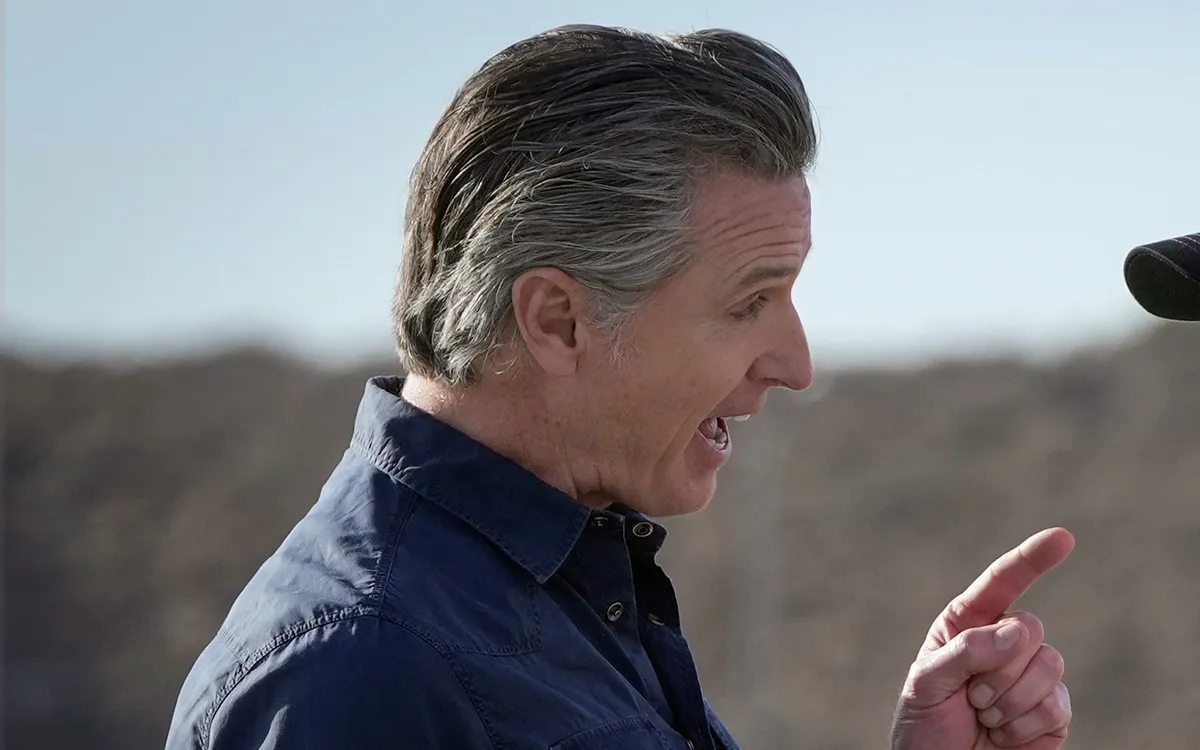
California Governor Gavin Newsom finally confronted President Donald Trump in a highly anticipated showdown. This clash arose after a fragile truce, established following the devastating wildfires in Los Angeles earlier this year, disintegrated over the weekend. Trump deployed the California National Guard against Newsom's objections to address protests related to immigration enforcement, escalating tensions between the two leaders.
In a furious response, Newsom did not hold back, labeling Trump a “dictator” and accusing him of being a “stone cold liar” for allegedly misrepresenting their recent communications. This anger echoes the political landscape following the November election, where Newsom was poised to lead the resistance against Trump’s second term. Just two days after Trump’s re-election, Newsom announced a special legislative session aimed at securing funding for litigation against the federal government, indicating his readiness for confrontation.
Despite the risky nature of his defiance, Newsom has successfully rallied support from Californians and his liberal base. He even sent out a fundraising email on the morning of the National Guard's deployment, showcasing his commitment to stand firm against federal actions. However, this stance risks potential retaliation from Trump, who has a history of aggressive responses to opposition. As Democratic consultant Matt Rodriguez remarked, challenging the president is a precarious endeavor, as Trump often retaliates with significant force.
In a stark turn of events, Trump suggested that he would advocate for Newsom's arrest over his handling of the protests. “I would do it,” Trump stated during a press conference, criticizing the governor's leadership as “grossly incompetent.” This comment marks a significant escalation in their conflict, especially given that just a few months prior, the two leaders had shared a warm greeting as Trump visited the wildfire-affected areas in Los Angeles.
The relationship between Newsom and Trump had appeared to improve after their warm exchange at LAX, where Trump promised to “take care of things” regarding wildfire recovery. However, that brief reconciliation quickly unraveled. In recent months, Newsom has shifted from a strategy of avoiding direct confrontation to actively promoting California’s lawsuits against the federal government. This evolution has reignited tensions, as Trump resumed calling him “Newscum,” particularly in response to policies affecting transgender athletes and the recent protests.
The breakdown of their relationship became evident over the weekend when Newsom made some of his strongest criticisms of Trump to date. He accused the president of authoritarianism by federalizing the California National Guard and expressed concerns about Trump’s mental fitness. Newsom's office continued to amplify his criticisms through social media, indicating a strategic shift in how he deals with Trump's administration.
As experts like Dan Schnur, a former Republican strategist, highlighted, Trump’s aggressive stance could potentially lead to California facing punitive measures, including withholding federal aid for wildfire recovery. The ongoing clash could serve as a distraction for Trump amid a challenging news cycle, but it also places Newsom in a precarious position. The longer unrest continues in Los Angeles, the more difficult it becomes for Newsom to maintain his image as a moderate leader.
Understanding the delicate balance he must maintain, Newsom has condemned violence and destruction while expressing respect for the National Guard. He also extended an olive branch to Trump by reaffirming his commitment to assist federal immigration authorities in deporting individuals released from California prisons. “I am not sitting here arguing for criminals in our backyard,” he emphasized, aiming to highlight his adherence to immigration laws.
This ongoing confrontation between Gavin Newsom and Donald Trump remains a pivotal moment in California politics, shaping the governor's future as he navigates a turbulent political landscape while contemplating a potential run for the presidency in 2028.